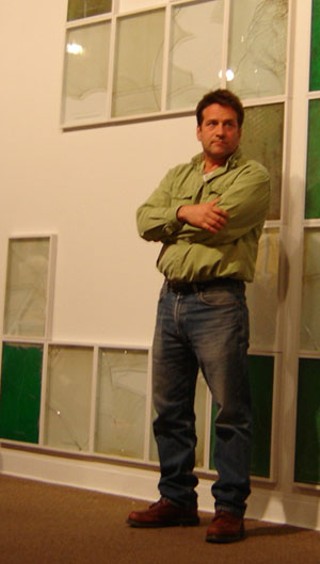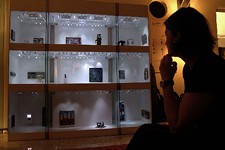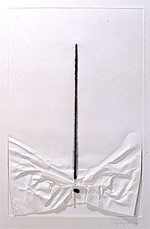Mel Ziegler: The exit interview
As he prepares to leave Austin, internationally recognized artist and former Arts Commission Chairman Mel Ziegler reflects on the city and the arts over the past decade
By Salvador Castillo, Fri., May 18, 2007

When he came to Austin a decade ago, Mel Ziegler thought he'd be here about a year. But the internationally renowned artist – here's hoping you caught the fine retrospective "Kate Ericson and Mel Ziegler: America Starts Here" at the Austin Museum of Art this spring – got a little more involved in the life of the city than he expected, teaching sculpture at UT and spending several years on the city of Austin Arts Commission, including a three-year term as chairman. Now, he's moving on (to Vanderbilt University, where he'll chair the studio are program), and the Chronicle asked him about his time here.
Austin Chronicle: Besides teaching sculpture at UT, how have you influenced Austin art in the past 10 years?
Mel Ziegler: As soon as I got on the Arts Commission, I decided to become the liaison to the Art in Public Places, so I sat on the AIPP panel for two years and the Arts Commission for six. I knew there was this history of them fighting, and my goal was to try to bring them together. And by doing that, we were able to put together the 2 percent policy. [Two percent of new city construction projects fund public art.] I consider that one of my major accomplishments. It wasn't just done by me; there were a lot of other people involved. I will say I was instrumental.
AC: What about the cultural plan; weren't you part of that?
MZ: They're working on that right now. That's something I have not been involved in. It's important in relation to Downtown, what's going on culturally, what's going on in terms of the construction and building. The fact that we might lose a restaurant like Las Manitas that's been here forever, those things that have character in this place that we've all attached to what Austin is, they have to address those things. It's not just about the arts; it's also about what this city is and what kinds of things like restaurants, which to me [help] give it its cultural identity, are really important. And to lose a place like that is really sad.
AC: Maybe it's a little too late for completing the plan?
MZ: I don't think it's too late. Perhaps for some places, yes. But there's still a possibility to try to latch on to some things that need to be held. You're going to lose things in the process of growing; that's just part of the nature of place. You don't want to be overly nostalgic either, because that would destroy the possibility of growth and expansion.
AC: Do you find the AMLI art projects to have been significant events?
MZ: Actually, that happening was significant. There were a lot of things that were going on at the same time. There were younger artists interested in generating their own space to show work. It used to be that a lot of students would graduate and leave. Now you graduate, you can stay, and you can actually generate something and make something happen. I think it's great; that's what should happen. That gives a place its identity. I always try to encourage that type of thinking. Don't wait around for someone to come to you. Just go out and make it happen yourself. That was what I did as a young artist.
AC: You do that now, don't you?
MZ: [Yes.] Even though I'm leaving, I'm being very complimentary. If you had asked me 10 years ago, I would've said, "I told my wife, 'I live in Podunk!'" [chuckling] I hated Austin. And I've come full swing. I enjoy being here; I like the community; I think it's much more exciting than it was before. Rather than just complaining and going elsewhere, I decided I'd try to also help the cause in one way or another, by being involved. It's kind of important. All of us can do a little bit on some level. And we can't do all of it ourselves, which is something I've learned.
If I was gonna stay, the next big project I would do would be to get the Dougherty Arts Center rebuilt. It's amazing what they do there already with that dilapidated building, and it could be such a great identity to the city of Austin. I think, even though it would be argued to the nth degree, that it should be right on the lake and it should be done by a world-class architect. That's the piece that needs to be redone and remade in keeping in character with everything else that's going on around the lake. I think it could be a world-class city arts center. It should be a symbol to Austin. ![]()








